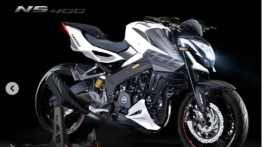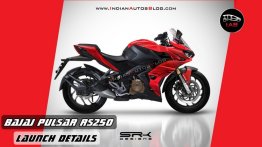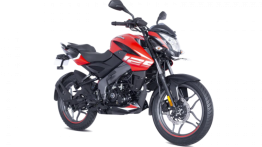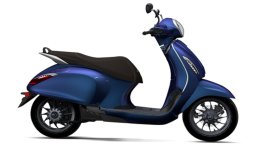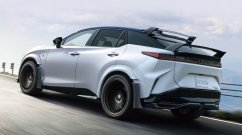Bajaj Auto has introduced the Pulsar 180F, a semi-faired version of the company’s Pulsar 180. The motorcycle was launched in India at an ex-showroom Delhi price tag of INR 87,450, putting it against the likes of TVS Apache RTR 160 4V and the Hero Xtreme 200R. In this post, we amalgamate the technical specifications of all three models.
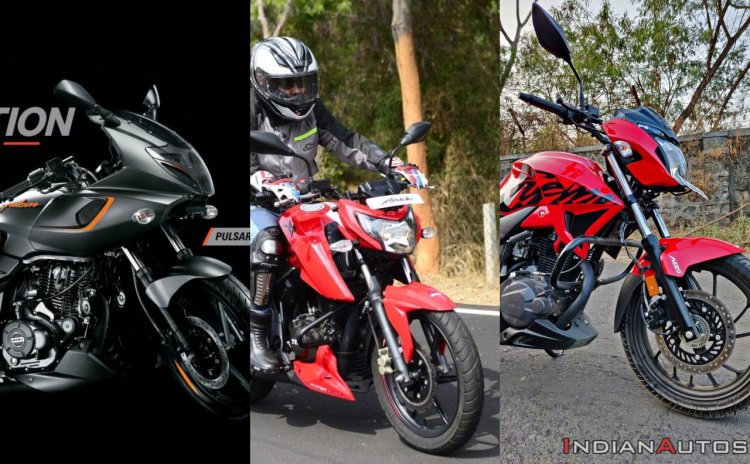
Also read: 2019 Bajaj Dominar 400 First Ride Review
| Specifications | Bajaj Pulsar 180F | TVS Apache RTR 160 4V | Hero Xtreme 200R |
| Engine | |||
| Displacement | 178.6 cc, SOHC 4-Valve, Air Cooled, DTS-i | 159.7 cc, SOHC, 4-Valve, Oil Cooled | 199.6 cc, SOHC 2-Valve, Air Cooled |
| Power | 17.02 PS @ 8,500 rpm | 16.8 PS @ 8,000 rpm (Fi)
16.5 PS @ 8,000 rpm (carb) |
18.4 PS @ 8,000 rpm |
| Torque | 14.22 Nm @ 6,500 rpm | 14.8 Nm @ 6,500 rpm | 17.1 Nm @ 6,500 rpm |
| Transmission | 5-speed | 5-speed | 5-speed |
| Dimensions | |||
| Length | 2,035 mm | 2,050 mm | 2,062 mm |
| Width | 765 mm | 790 mm | 778 mm |
| Height | 1,115 mm | 1,050 mm | 1,072 mm |
| Wheelbase | 1,345 mm | 1,357 mm | 1,338 mm |
| Seat height | 790 mm | 800 mm | 795 mm |
| Ground clearance | 165 mm | 180 mm | 165 mm |
| Fuel tank capacity | 15 litres | 12 litres | 12.5 litres |
| Kerb weight | 151 kg | 145 kg | 148 kg |
| Brakes | |||
| Front | 260 mm Disc | 270 mm Disc | 276 mm Disc |
| Rear | 230 mm Disc | 130 mm drum / 200 mm Disc | 220 mm Disc |
| ABS | No | Yes, Single-Channel | Yes, Single-Channel |
| Suspension | |||
| Front | Telescopic | Telescopic | Telescopic |
| Rear | Twin-sided springs | Monoshock | Monoshock |
| Tyres | |||
| Front | 90/90 – 17 | 90/90-17 | 100/80-17 |
| Rear | 120/80 – 17 | 130/70-17 | 130/70-R17 |
| Prices | |||
| (Ex-showroom) Delhi | INR 87,450 |
|
INR 89,900 |
In terms of styling, all three motorcycles feature muscular looks and appealing visuals, but the Bajaj Pulsar 180F gets an edge due to its semi-fairing design with a vertically stacked headlight that draws inspiration from the Pulsar 220F. The semi-fairing design also offers better aerodynamics and windblast protection at high speeds. Surprisingly, the motorcycle is yet to receive the safety net of ABS (as on March 19 – when this post was created) whereas its naked roadster variant, the Pulsar 180, is ready to comply with the new norms. Similar to the naked roadster, the Pulsar 180F would feature a single-channel ABS with rear lift-off protection as standard.
The TVS Apache RTR 160 4V draws styling cues from the RTR 200 4V, which was inspired by the Draken Concept. The naked styling with a chiselled look and race-inspired decals make the Apache a desirable package. The TVS Apache RTR 160 4V also offers a lot of variation, and the motorcycle could be purchased in four variants –
- Carburettor with rear drum brake
- Carburettor with rear disc brake
- Fuel injection with rear disc brake
- Fuel injection with rear disc brake and single-channel ABS
The carburettor version is yet to receive the safety net of ABS although that would happen very soon as the April 2019 deadline to comply with the new norms is less than two weeks (as on March 19 – when this post was created) away. The motorcycle features a single-channel ABS, and thus the rear drum version would be continued.
The Hero Xtreme 200R lived up to the styling of the Xtreme family as the motorcycle packs a sporty look. The muscular styling is enhanced by fuel tank shrouds and beefy body panels that make the Xtreme 200R quite desirable. The bike is ready to ride across the April 2019 deadline to comply with the safety norms and comes standard with a single-channel ABS.
In terms of performance, the Hero MotoCorp Xtreme 200R has the displacement advantage, and despite having a 2-valve engine, the motorcycle makes 18.4 PS of maximum power. The Bajaj Pulsar 180F makes 17.02 PS while the Apache RTR 160 4V delivers 16.5 PS with the carburettor and 16.8 PS with fuel-injection. The Apache RTR 160 4V is the only motorcycle among the three products in this comparison to feature fuel-injection technology.
All three motorcycles use conventional telescopic forks. However, the Pulsar 180F comes with dual-sided springs while the Xtreme 200R and the Apache RTR 160 4V receive a monoshock at the rear.
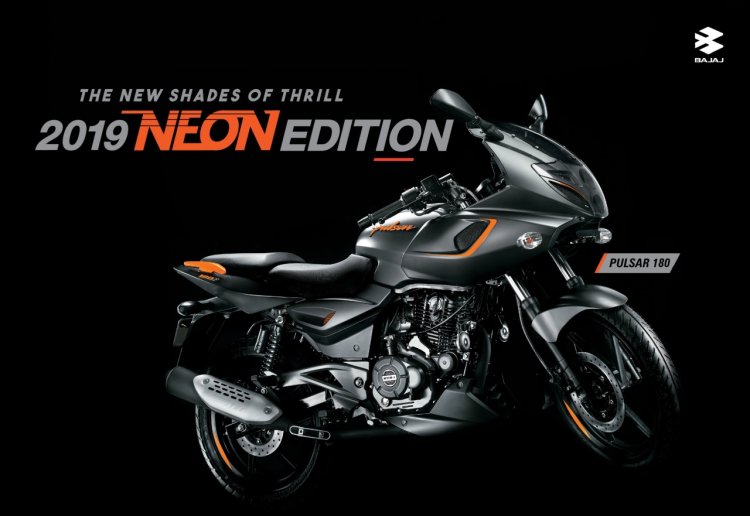
Also read: Bajaj Avenger 160 Street could replace the Avenger 180 Street – Report
Stopping power comes from disc brakes on both ends although the Apache RTR 160 4V is the only motorcycle that is available with the option of a rear drum brake, which is the most affordable variant (INR 83,145) in this comparison. The price tag would go higher with the addition of ABS. The Pulsar 180F carries an INR 87,450 price tag but remember that it is currently sold in non-ABS form only. With the addition of ABS, we could see a price increase of INR 6,500 to INR 7,000. The Hero Xtreme 200R is the most affordable 200 cc bike in the Indian market today, and it retails for INR 89,900.
All prices mentioned are ex-showroom Delhi












